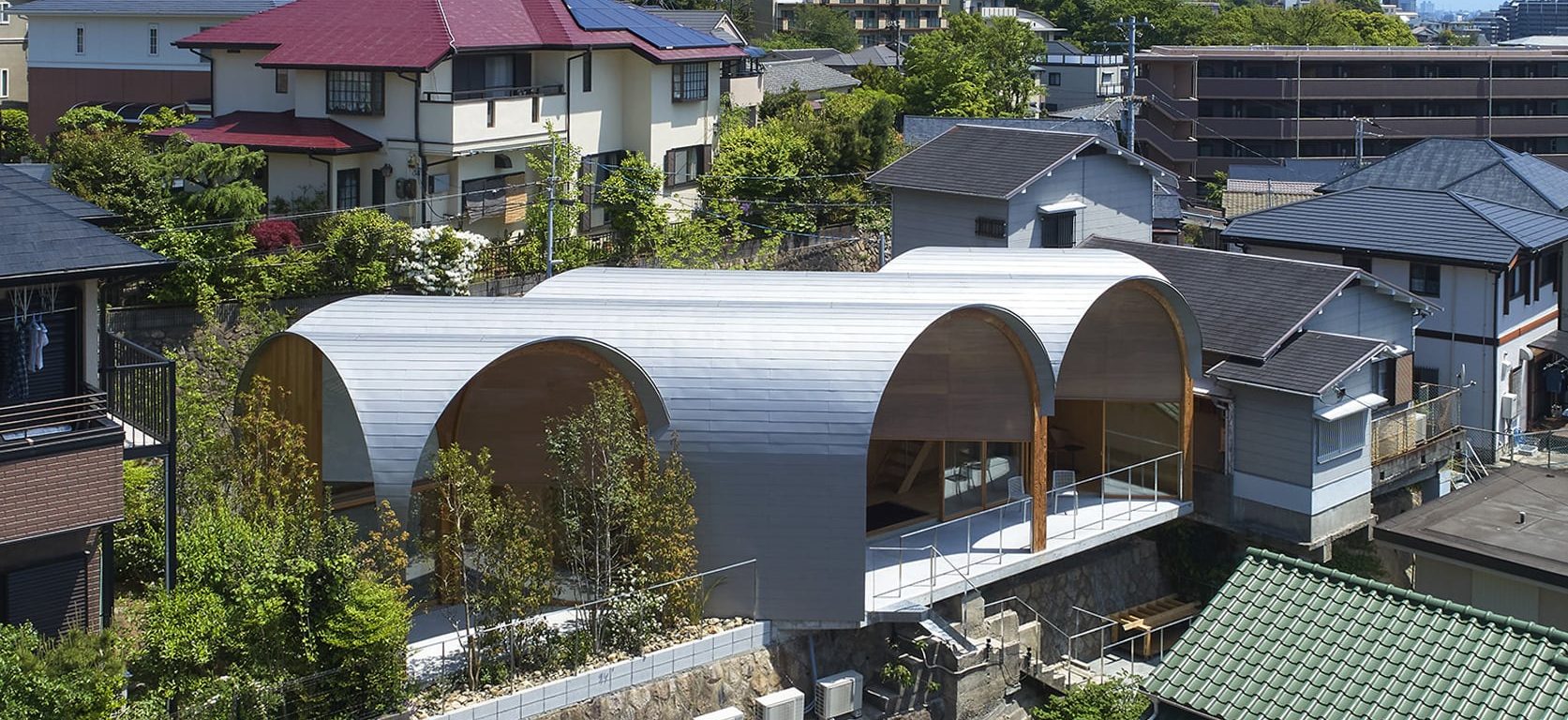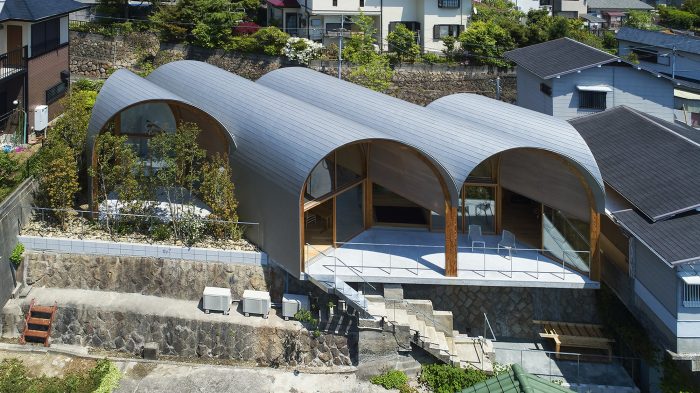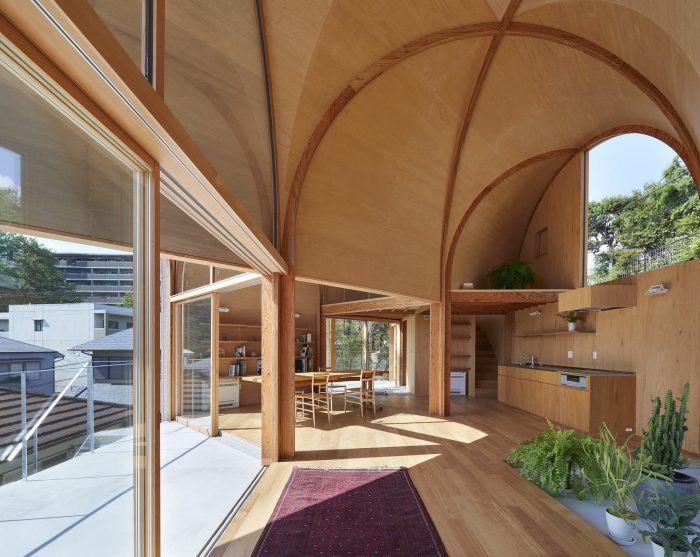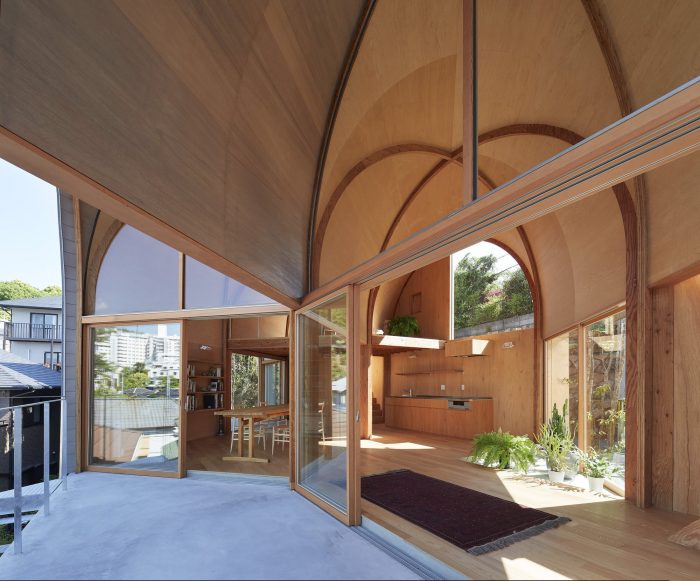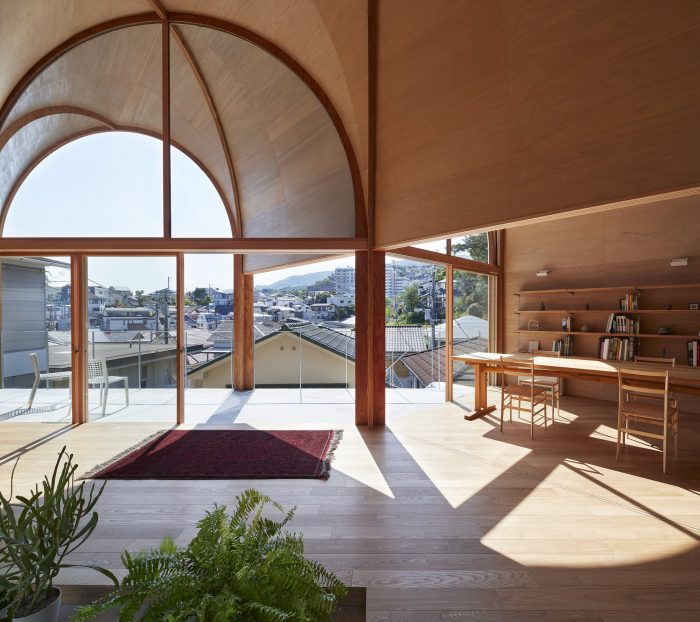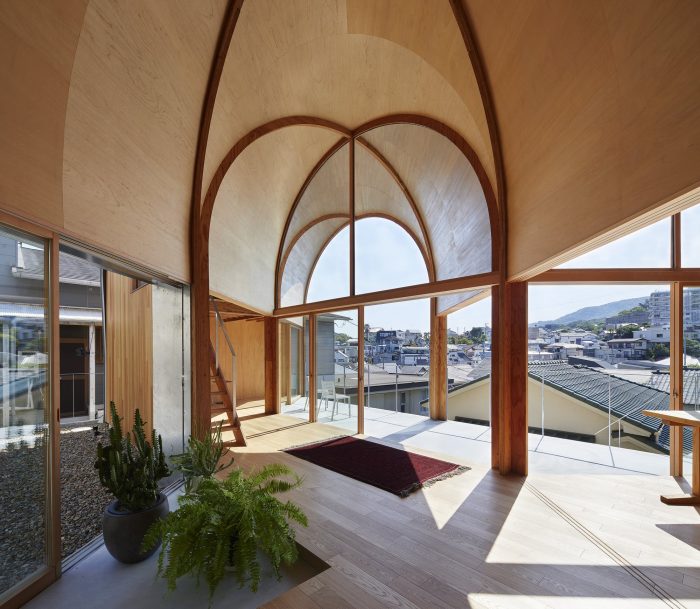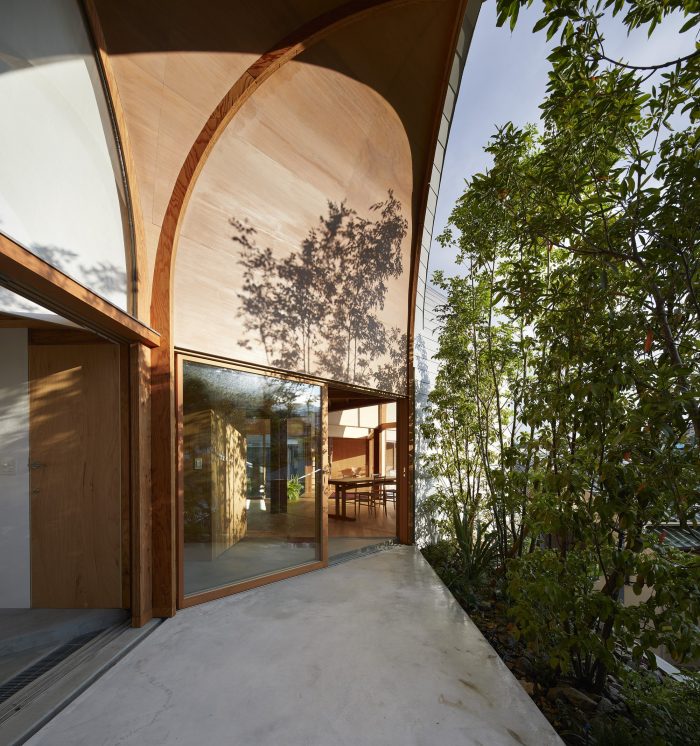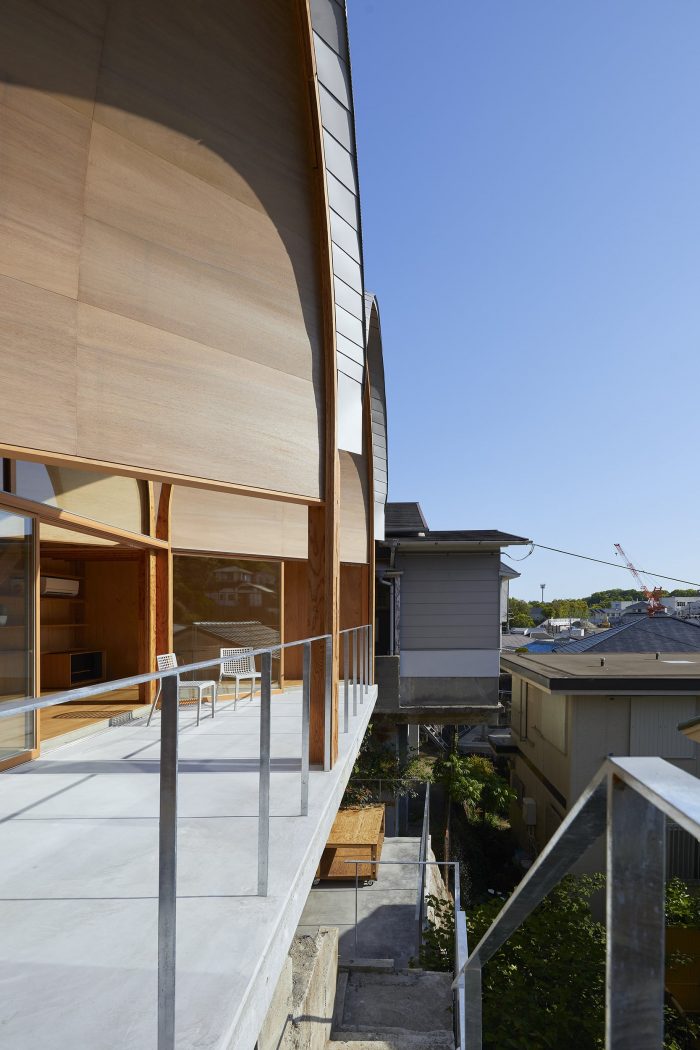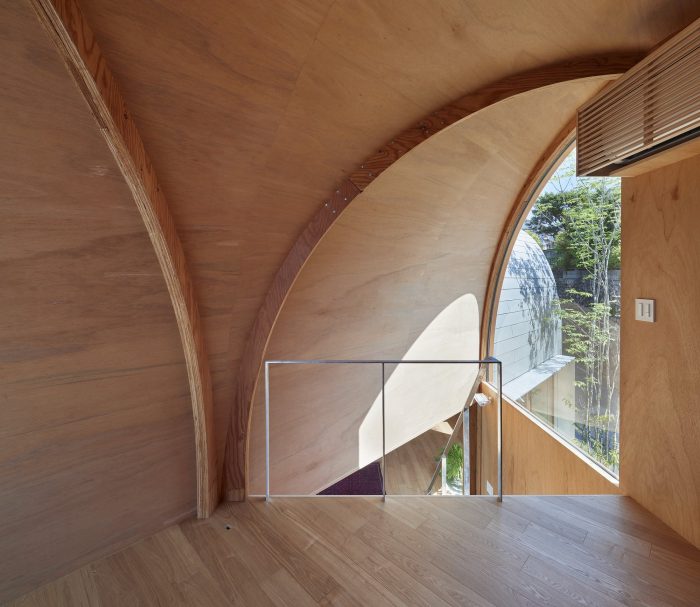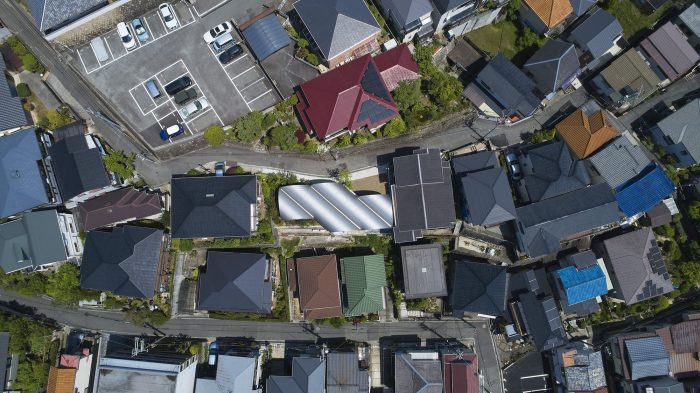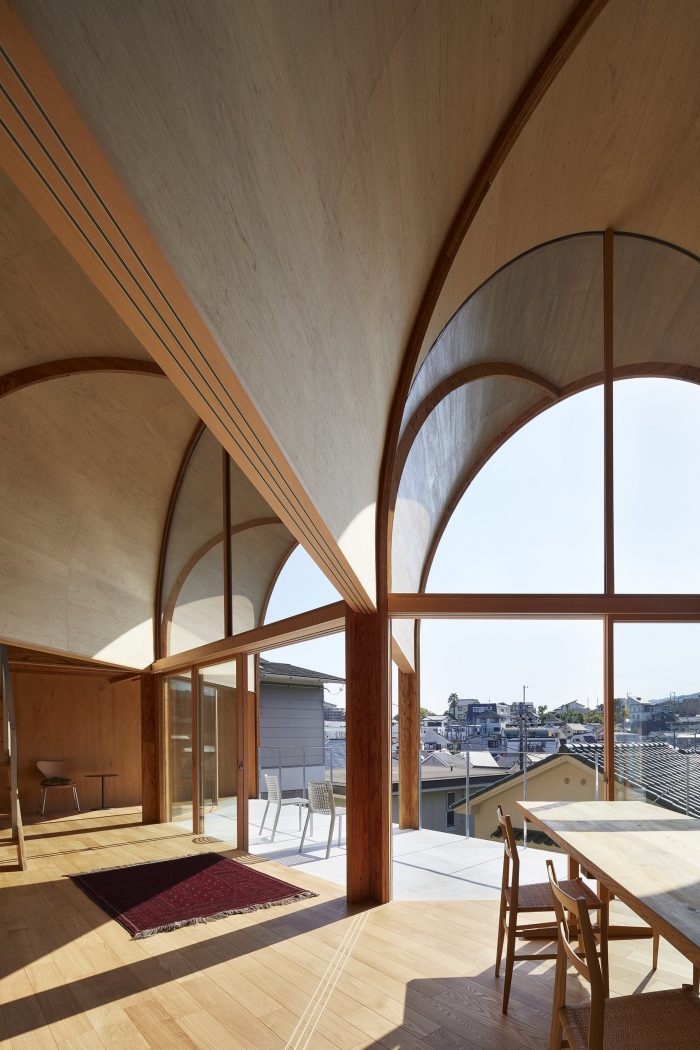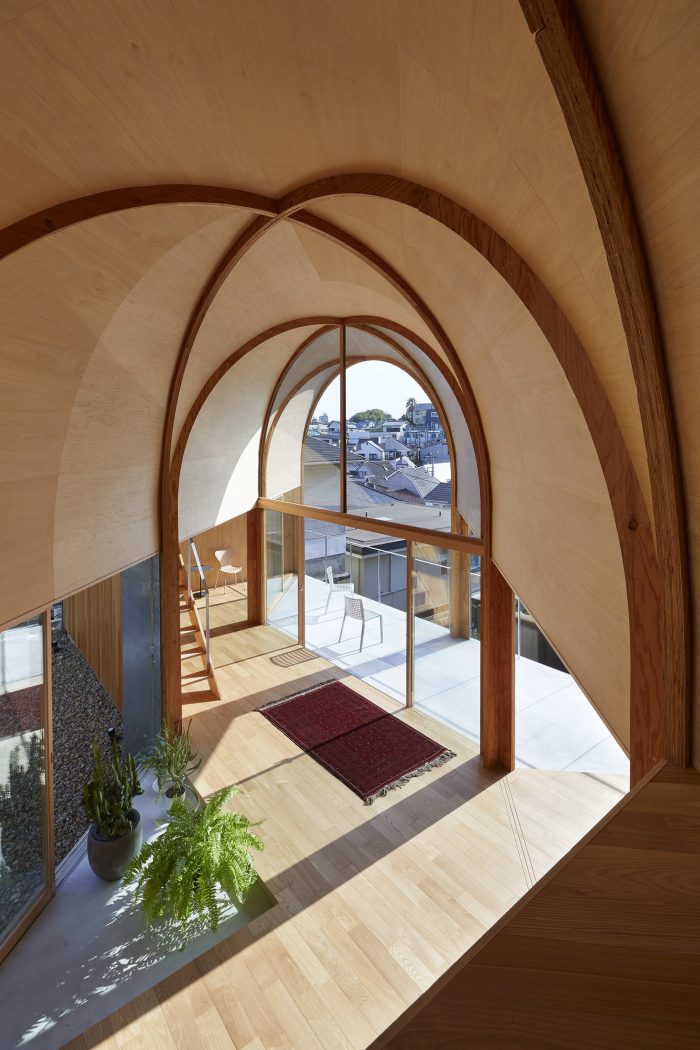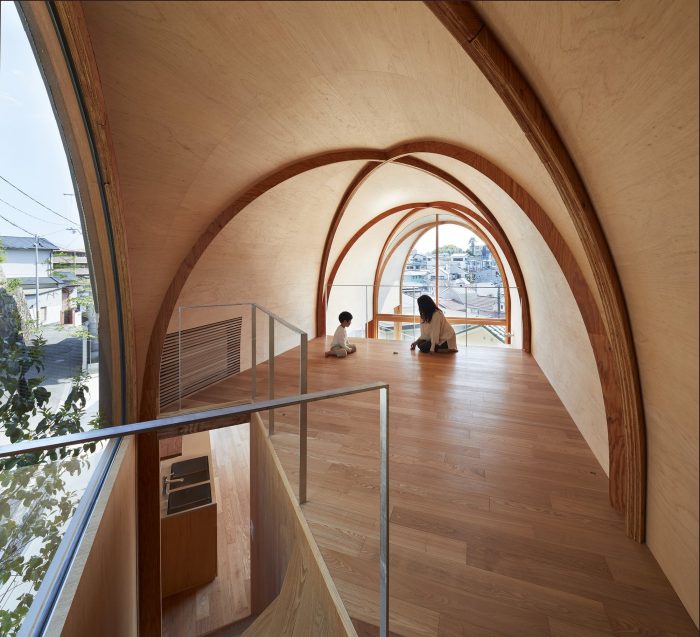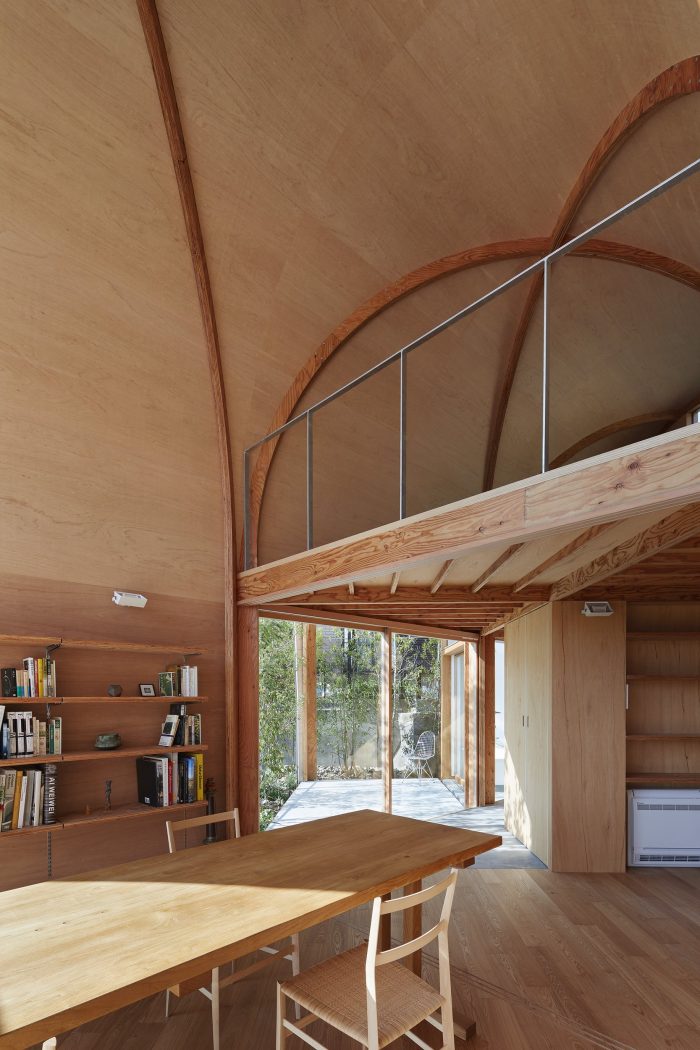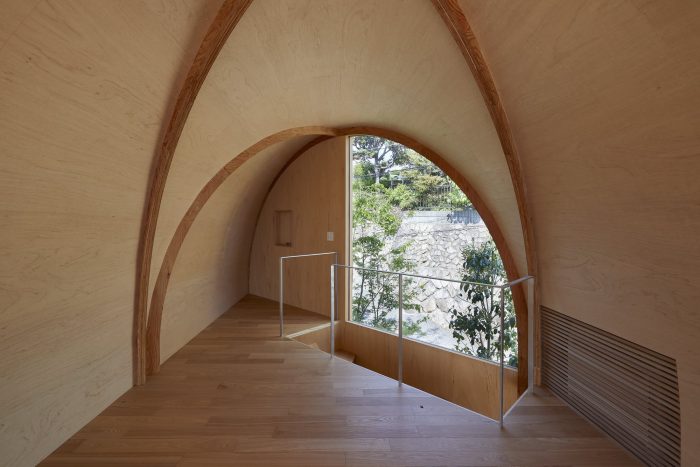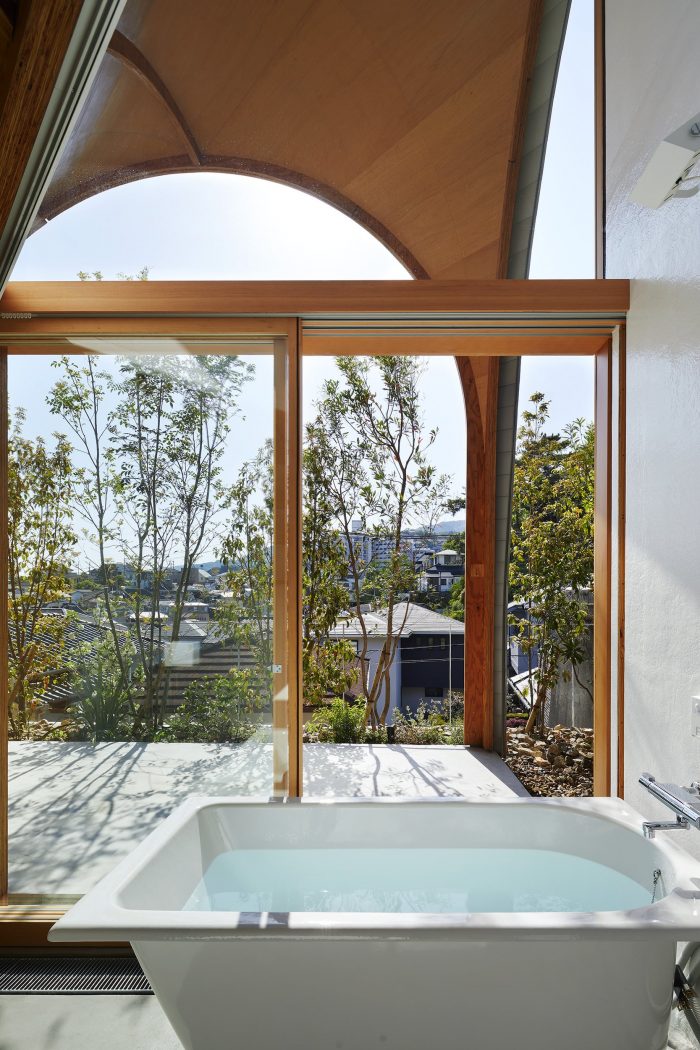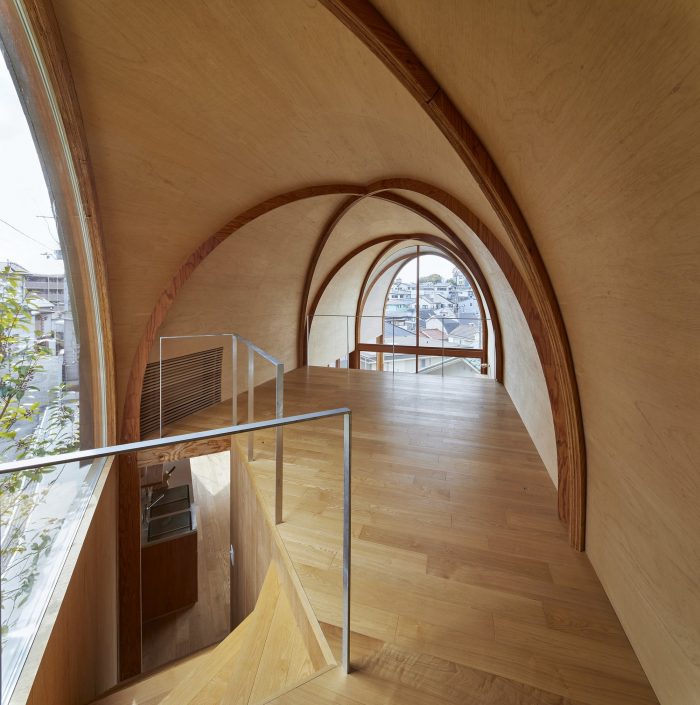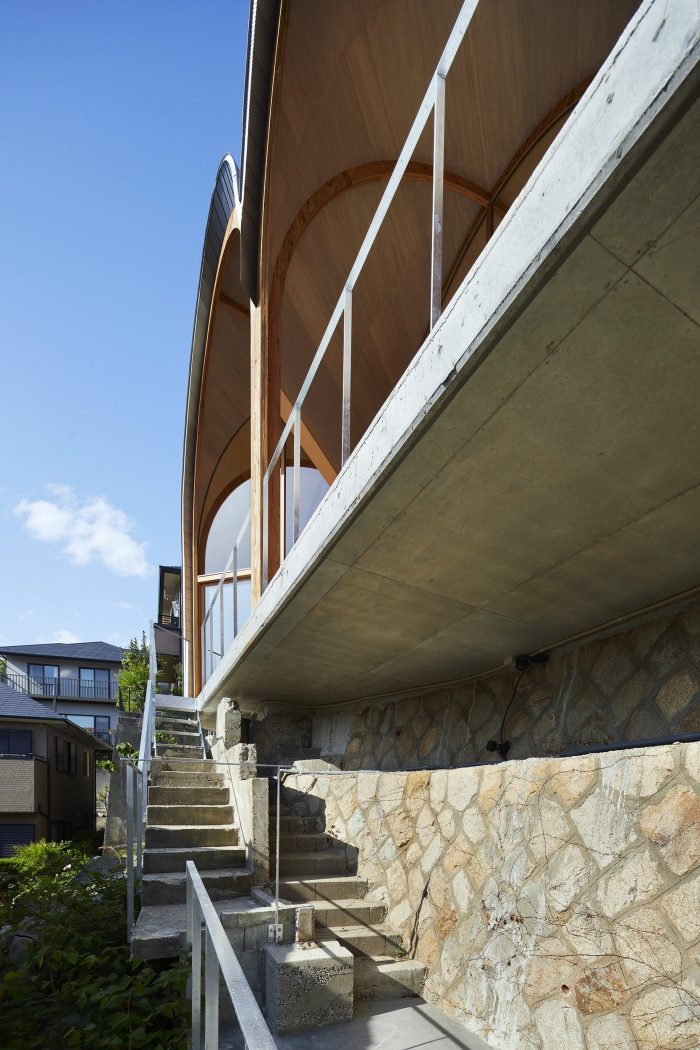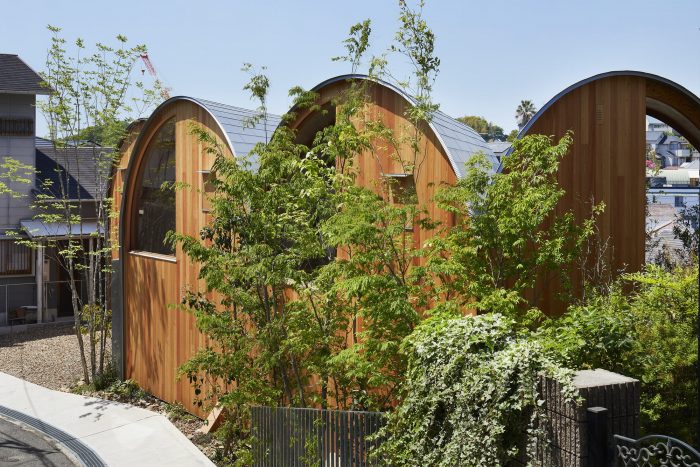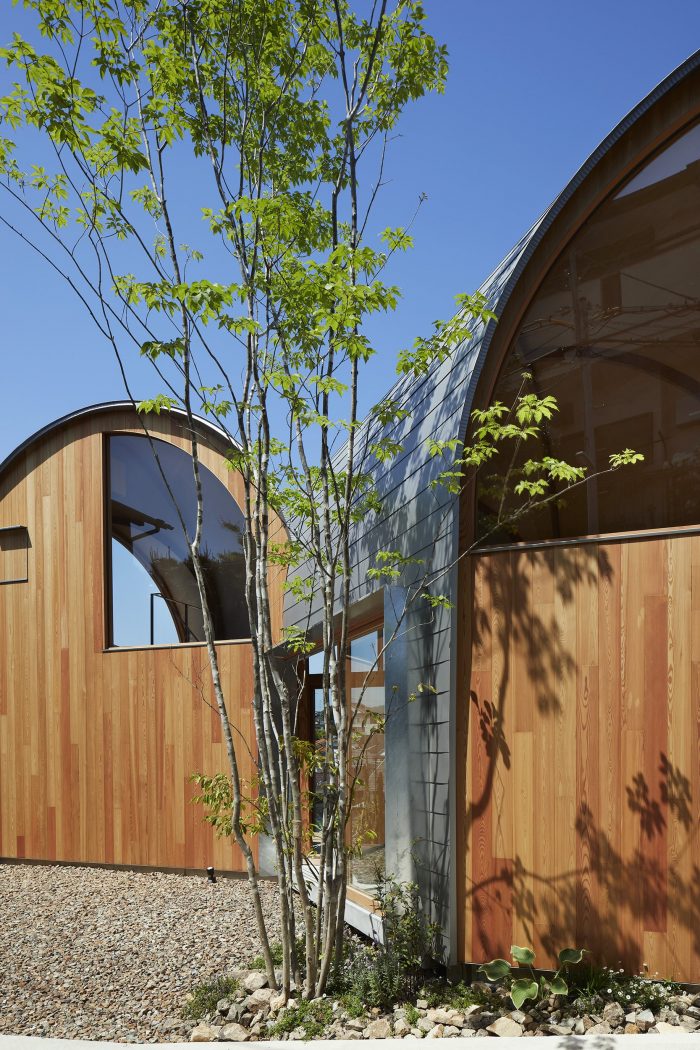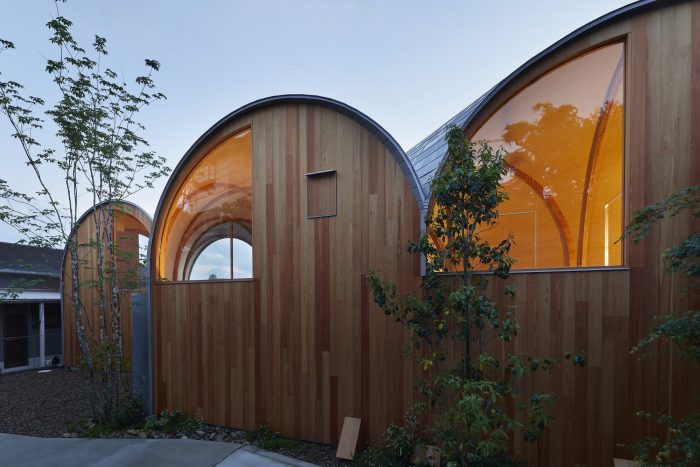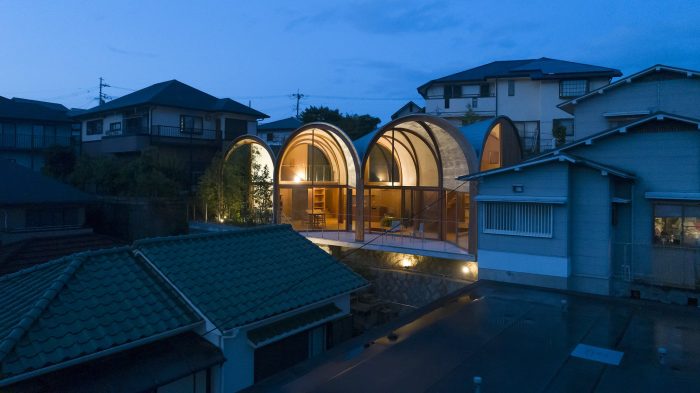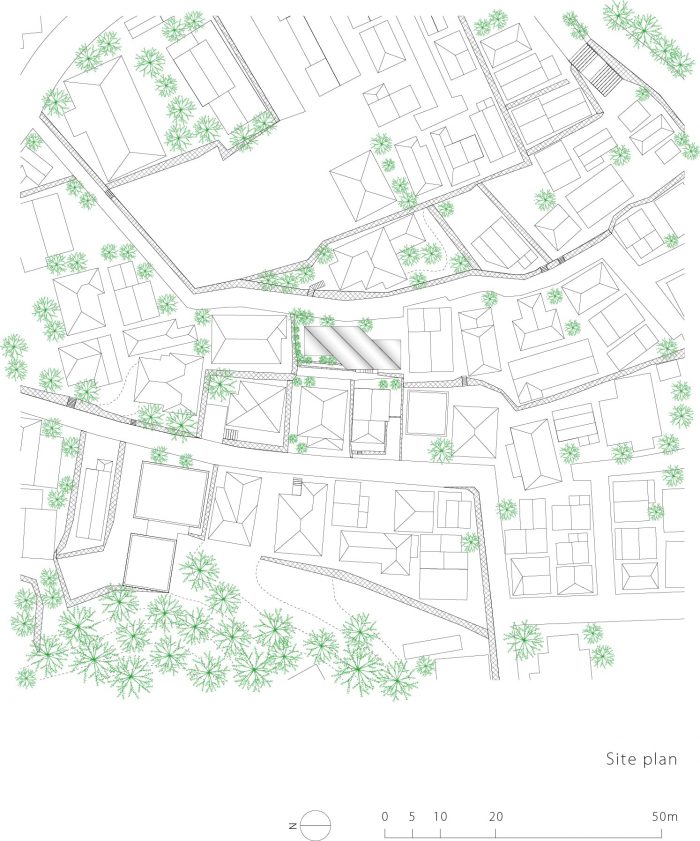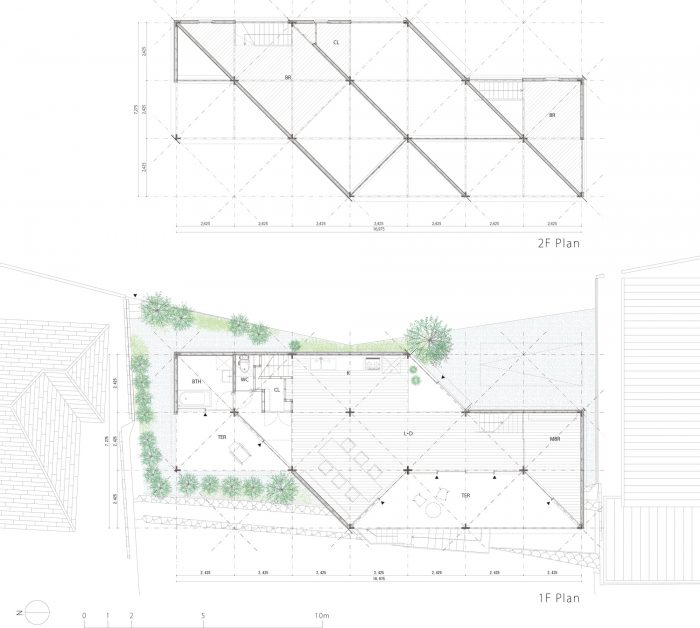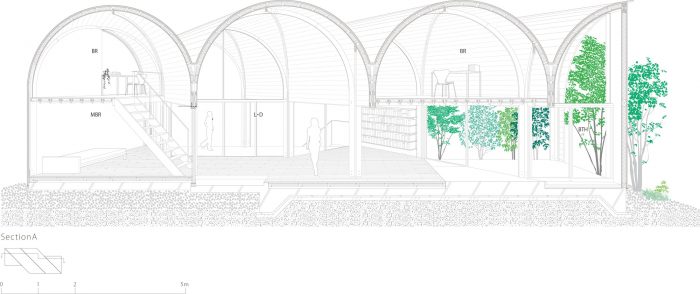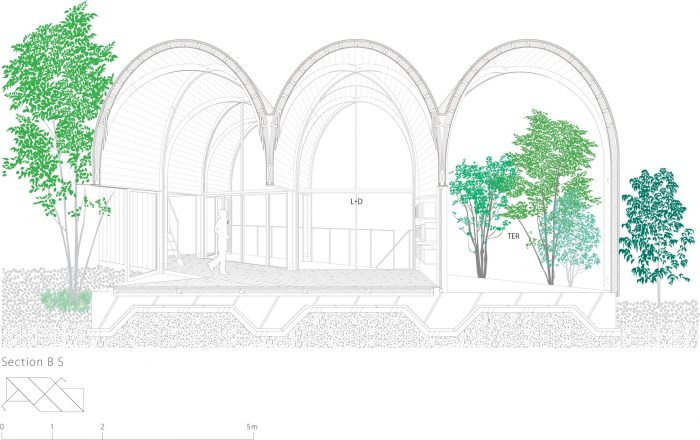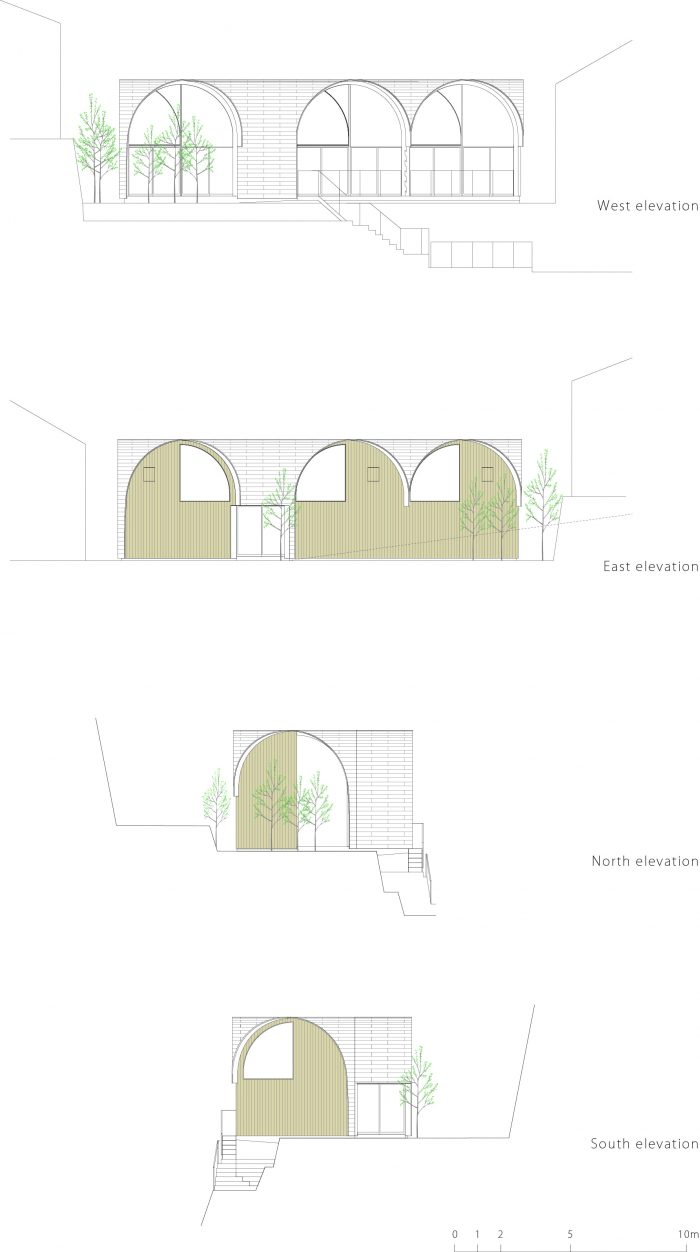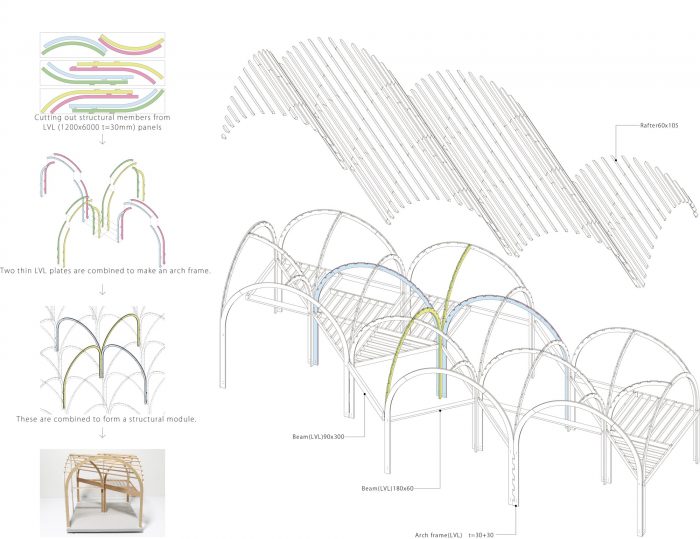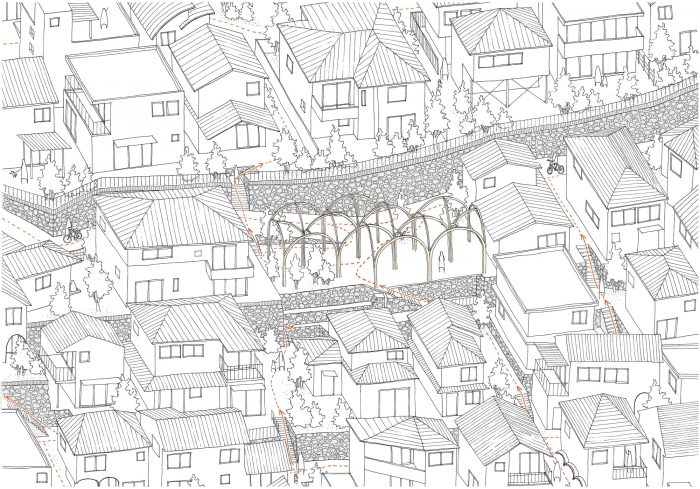日本兵库县的一所房子。它的周围是由复杂的挡土墙和蜿蜒的道路组成的景观,这些道路是在斜坡上形成的,与生活交织在一起。这个地方还包含一些来历不明的挡土墙和看起来像动物道路的楼梯,给人的印象是这个地方是城市过渡空间的一部分,在过去,这里是道路与挡土墙相交的地方。从这种情况出发,我们想思考住宅应该以过去或现在的街道为线索,融入城市的流动并与之相连。我们认为,通过这样做,房子将与城市的形象联系在一起,而感知的空间将不局限于房子,而是扩展到城市。
A house in Hyogo Prefecture, Japan. It is surrounded by a landscape of complex retaining walls and winding roads that have been created on a slope and are interwoven with lives. The site also contains a number of retaining walls of unknown origin and stairways that look like animal paths, giving the impression that this place is part of the transitional space of the city, and that in the past it was a place where roads intersected the retaining walls. From this situation, we wanted to think about the way in which a home should blend into and be connected to the flow of the city, using the streets of the past or present as a clue. We thought that by doing so, the house would be connected to the image of the city, and the perceived space would not be confined to the house but would expand into the city.
当我们观察目前通往工地的道路时,我们发现这是一条宽约2米的狭窄道路,它几经弯曲,使得建筑材料无法运输。因此,我们开始考虑一种可以用手运输和组装的方法。我们把重点放在拱门上,因为它是一种可以通过组合小块而跳过跨度的形式。在容易发生地震的木材文化中,我们想知道这种形状是否可以用木材组装,并将其转换为砖石结构。
When we looked at the current road leading to the site, we found that it was a narrow road of about 2 meters in width that bent several times, making it impossible to transport building materials. Therefore, we started by considering a method that could be transported and assembled by hand. We focused on the arch as a form that can skip spans by combining small pieces. In the wood culture prone to earthquakes, we wondered if this shape could be assembled using wood and converting it to masonry.
我们把重点放在可以拆卸和组装成小块轻质材料的LVL(Laminated Veneer Lumber)材料上,并想出了一个机制,通过用六个30毫米厚的LVL部件组装一个拱门,可以方便运输和手工组装。这些材料是用激光从LVL板上切割下来的,通过移动它们的连接位置,使它们不重叠,将两块材料堆叠连接起来,形成一个由小型LVL单元组成的宽松的拱形结构。这是一个原始的系统,其中只有压缩力和拉力沿着纤维方向切割出来的木材纹理流动。
We focused on LVL(Laminated Veneer Lumber) material that can be disassembled and assembled into small, light pieces, and came up with a mechanism that allows easy transportation and assembly by hand by assembling one arch with six 30 mm-thick LVL parts. The materials are cut from LVL boards using a laser, and the two pieces are stacked and connected by shifting their connecting positions so that they do not overlap, resulting in a relaxed arch structure made of small LVL units. This is a primitive system in which only compression and tension forces flow along the grain of the wood cut out along the fiber direction.
以这种方式创造的木拱门被背靠背固定,并组合成一个十字形的柱子形状,发展成一个可以伸展和重复的结构。
The wooden arches created in this way are held back to back and combined into a cruciform column shape, which is developed into a structure that stretches and repeats.
接下来,对结构的屋顶进行了研究,决定从十字形拱门的网格中斜向45度制作一系列拱形屋顶。通过这样做,十字形柱子的坐标和对角线拱顶在顶部和底部重叠,形成了一个多轴流,响应了周围螺旋形路径的流动,同时,房子的开放性可以向多个方向延伸。
Next, the roofing of the structure was studied, and it was decided to make a series of vaulted roofs at 45 degrees diagonally from the grid of cruciform arches. By doing so, the coordinates of the cruciform columns and the diagonal vault overlap at the top and bottom, creating a multiaxial flow that responds to the flow of the surrounding spiral path, and at the same time, the openness of the house can be extended in multiple directions.
结构的形式,通过小部件的组装创造出一个广阔的空间,成为一个多轴的坐标,连接道路的流动,将感知中的空间延伸到城市的广阔中,并旨在创造一个融入舒展的斜坡景观中的住宅。
The form of the structure, which creates an expansive space through the assembly of small components, becomes a multiaxial coordinate that connects the flow of the road, extends the space in the perception into the expanse of the city, and aims to create a home that blends into the landscape of stretchy slopes.
Architects: Tomohiro Hata Architect and Associates
Area : 125 m²
Year : 2021
Photographs :Toshiyuki Yano
Lead Architects : Tomohiro Hata , Kenichi Yoshimura
Structural Engineering : Takashi Manda Structural Design, Takashi Manda Structural Design– Takashi Manda , Sou Dou
General Contractor : Kohatsu Co.Ltd., Shelter, Shelter – Koji Endo
Landscape Architects : Ishi Landscape, Ishi Landscape – Takanobu Ishii
Country : Japan

